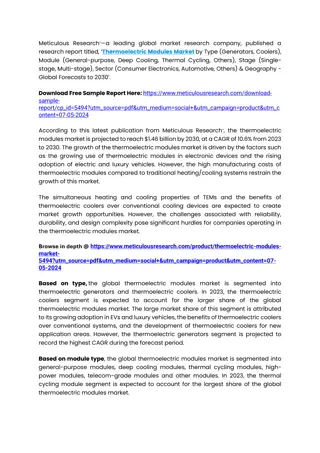
High Performance Work Systems: Meta-Analysis & Key Findings
Explore the concept of High Performance Work Systems (HPWS) and their impact on business performance through a meta-analysis of country differences. Discover key terms, methods, and results highlighting the effectiveness of HPWS on a global level and the importance of cultural adaptation. Uncover insights on HR practices and turnover considerations for optimal organizational performance.
Download Presentation

Please find below an Image/Link to download the presentation.
The content on the website is provided AS IS for your information and personal use only. It may not be sold, licensed, or shared on other websites without obtaining consent from the author. If you encounter any issues during the download, it is possible that the publisher has removed the file from their server.
You are allowed to download the files provided on this website for personal or commercial use, subject to the condition that they are used lawfully. All files are the property of their respective owners.
The content on the website is provided AS IS for your information and personal use only. It may not be sold, licensed, or shared on other websites without obtaining consent from the author.
E N D
Presentation Transcript
High Performance Work Systems Arezou Biabani, Brittany Cook, Sanober Hashmi, Jo Short, Trisha Tran
What is a High Performance Work System? Group of separate but interconnected HR practices Designed to enhance employee effectiveness. Results in better skills, more motivation, and more opportunities to excel. HR practices must be aligned and work in harmony
A Meta-Analysis of Country Differences in the High-Performance Work System- Business Performance Relationship: The Roles of National Culture and Managerial Discretion Brittany Cook
Key Terms HPWS High Performance Work Practices Cultural Tightness-Looseness Power distance Institutional Flexibility
Purpose Will HR practices that work in one country work the same in another. To determine if the HPWS-Business Performance relationship is moderated by country differences in national culture and institutional factors.
Method Consisted of 156 studies from 35,767 firms, and 29 countries. Studies had to measure both HPWS and Operational/Financial performance outcomes Moderators: Cultural Tightness-Looseness Institutional flexibility
Take Home Message HPWS are effective on a global level HPWS should be tailored to some extent to local culture, but not to the extent that previous National Culture Theories believed HPWS can potentially lead to lower turnover Major gaps in this study Fails to take into account the variance in cultures within a country Fails to consider if HPWS are common in that country
An Employment Systems Approach to Turnover: Human Resources Practices, Quits, Dismissals, and Performance Jo Short
The Study Customer Service ? ? Turnover HPWS Incentives Survey of call centers in 1998 and 2003 Senior managers took surveys about their core workforce HPWS measured by extant of employee discretion, use of problem-solving groups, and use of self-directing teams
Results Long Term Incentives - Customer Service - - HPWS Turnover (+) Short Term Incentives
Take Home Message Implementing a High Performance Work System...Depending on the business model Reevaluate current incentive models to make sure it aligns with the business Contract employees Internal promotional paths Mentorships
Developing Collective Customer Knowledge and Service Climate: The Interaction Between Service-Oriented High-Performance Work Systems and Service Leadership Sanober Hashmi
Key Terms Service Climate: employee perceptions of the practices and procedures that get rewarded with regards to customer service and customer service quality. Service Leadership:business leader s behavioral focus as an example for the unit Collective Customer Knowledge: knowledge employees have on different customer types and dealing with customer needs.
Is there a positive correlation??? 1. Service Leadership will positively relate to customer knowledge and service climate. 1. Service-Oriented HPWSwill positively relate to customer knowledge and service climate.
The Method Huge high fashion shoe retailer with more than 5,000 retail stores used to collect data. 1st round: Implementation of Service Oriented HPWS 2nd round: Employees= Service leadership and service climate Store managers = Collective customer knowledge and service performance
Service Leadership Collective Customer Knowledge Service Oriented HPWS Service Climate HPWS * Service Leadership
Low to High Leadership makes a difference!
Take Home Message Invest in HRM practices or rely on the behavior of leaders for superior customer service. It may not be efficient to invest heavily in both of these approaches at the same time. Redundancy.
The role of employee HR attributions in the relationship between high-performance work systems and employee outcomes Trisha Tran
Key Terms HR Attributions Organizational Commitment Job Strain Multi-level
The Study HR Well-Being Attribution High Performance Work Systems Job Strain
Method HPWS data is collected from line managers Data on HR attributions, commitment, and job strain are directly from the employees Collected within a wide variety of industries Measured along 5 functional HPWS areas 26 HPWS items were grouped into 3 bundles: skill enhancing, motivation- enhancing, and opportunity enhancing
The Study Not significant HR Well-Being Attribution High Performance Work Systems Job Strain -.13
Take Home Message Find a balance between well-being attributions and performance attributions in order to utilize HPWS to retain quality employees Work-life balance Performance appraisals Surveys Group goal setting Turnover group (slide 30): Career development, company specific trainings
Walking The Tightrope: An Assessment of the Relationship between High-Performance Work Systems and Organizational Ambidexterity Arezou Biabani
Key Terms Ambidexterity: to exploit and explore opportunities concurrently Ambidexterity congruence: extent to which exploration and exploitation are conducted simultaneously Discipline: to have clear performance standards & expectations Stretch: to set goals that raise the bar
The Study Using HPWS to get ambidexterity Achieving firm growth through ambidexterity ? ? HPWS Ambidexterity Firm growth
Method 215 high-tech small/medium-sized firms 10-250 employees Likert scale survey HPWS: 27-item scale measuring HR practices Ambidexterity: 12-item scale measuring exploitation & exploration Firm growth: Compounded annual growth rate of sales & employee growth
Scale Items 1, strongly disagree, to 5, strongly agree Ambidexterity: Exploration Looks for novel technological idea by thinking outside the box Exploitation Commits to improve quality and lower cost HPWS: Employees in our firm are often asked to participate in decisions
Take Home To produce an ambidextrous organization, HR practices should be linked to discipline, stretch, support & trust To successfully link HPWS to ambidexterity, HR practices should ensure: Selective staffing Extensive training Results-oriented appraisal, rewards & participation Internal mobility Employment security
Group Take Home Message Before investing in a HPWS make sure it aligns with the organization Know that the results of a HPWS take time and are hard to measure One HPWS will not necessarily work the same way in another company








